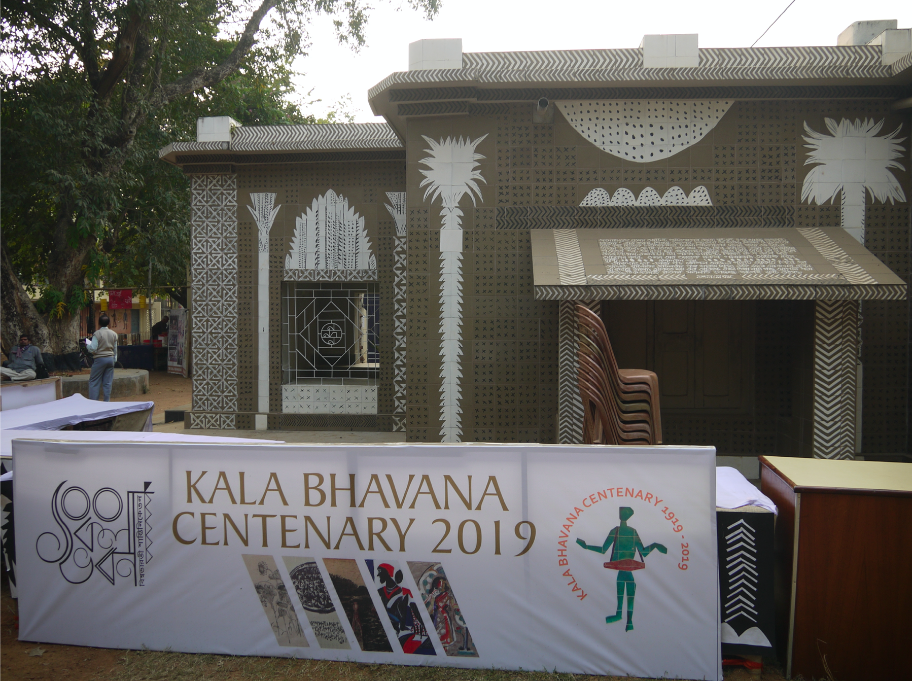All roads lead to pous mela in Shantiniketan; the month of pous falling towards the end of December, and beginning of January. Held officially for three days, the various stalls continue to operate for a longer time. This is when artisans bring in their wares from nearby villages of this small town, located near Bolpur, in the Birbhum district of West Bengal. The weather is usually cold and crisp, and the city people plan for a small getaway to enjoy some country air and mela or fair/carnival time. Live music presentations are an integral part of the fair, prompting music lovers to travel only for this because the double bill is in the annual baul mela, held roughly 40 kilometres away at Kenduli, the birthplace of the famous ancient Bengali poet, Joydev. The pous mela, however, over the years, has reduced into a synthetic one, catering more to the needs of the locals; the artisanal flavour somewhat missing from it.
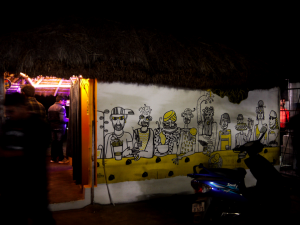
Abode of peace and knowledge
But anytime is a good time to visit Shantiniketan, three-and-half-hours by train, of which there are plenty of options to choose from. Or one can drive down, stopping at small dhabas for snacks and sweets, along the way. The speciality mishti of the region is the langcha of Shaktinagar.
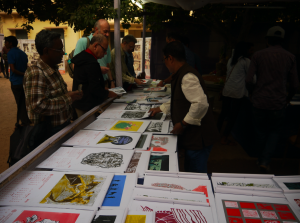
Gurudev Rabindranath Tagore’s father Debendranath founded Shantiniketan, as an abode of peace and knowledge, he being a philosopher. But it was Rabindranath who set up a residential school and later, a university, where one could learn and hone both performing and fine arts in an open environment. Instead of being confined to classrooms, the ashram style Viswa Bharati was known for its classes under the shade of trees and the open sky, collaborating with the local tribal community to learn about their art and craft. Art in it various manifestations – performing such as dance, music, drama and visual arts in oil painting, water colours, screen printing, sketches, print making, lino cuts, lithography, sculptures, the art of tying and dyeing, et al, flourished here under dedicated mentors.
Even though Shantiniketan remains a quick getaway from the city, it is facing the onslaught of development, by which private houses and sprawling gated housing complexes are fast sprouting, resulting in crowds and congestion. The idyllic ambience has long gone, but it is just that the locals need more amenities and less of real estate development. The private homestays in some of the bungalows, very tastefully and artistically designed, and owned by several well-known names of the city’s intellectual and artistic community, can offer a breather for a few days. Otherwise, small hotels and resorts abound.
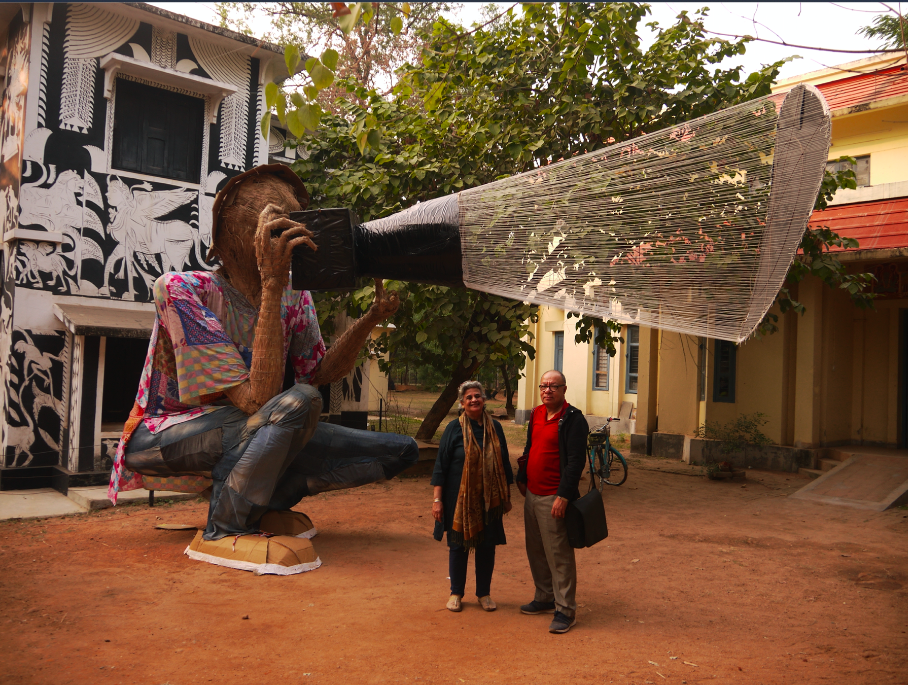
Tagore also visualised a universal abode of syncretism and harmony, combined with simple living. Not a touristy affair. So a mandatory visit to Viswa Bharati University, or to see the several simple mud house architecture inspired homes that Tagore built to enjoy his discourses with people like C.F. Andrews, Gandhiji, and other stalwarts from various fields. These are what legends are made of. Sonajhuri, on the banks of River Kopai, is where some tribal fair or haat takes place on weekends, attracting hordes of visitors to buy, mainly, woven saris, and tribal dokra and white metal jewellery.
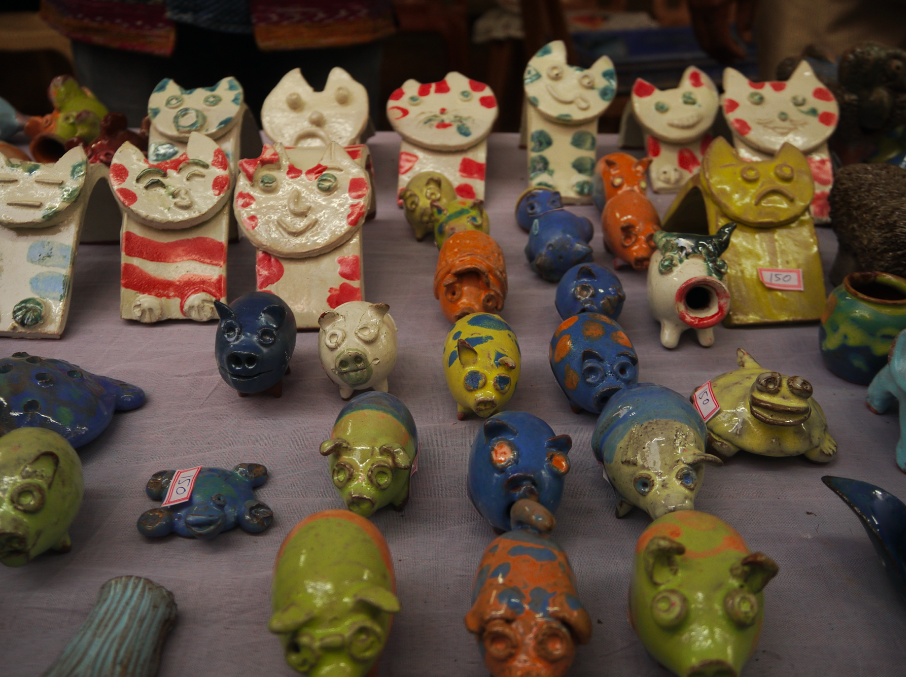
Seasonal festivals
From Basanta Utsav which is the onset of spring to Barsha Mangal during the heavy rains, the festivities here revolve around the seasons than religion. But the most unique fair that Shantiniketan offers and remains one of its best kept secrets is the two-day art or nandan mela held every year on December 1 and 2. The uniqueness of this mela is that it is an art exposition organised by the students of Kala Bhavan at Viswa Bharati. Kala Bhavan attracts students from several part of the globe (Bangladesh, Turkey, Korea, Japan, to name a few), wanting to study art and design here.
Kala Bhavan synonymous with unique style of art known as the Shantiniketani School of Art, was set up in 1918, and has produced not only the multi-faceted Tagores but other renowned names like Ram Kinkar Baij, Nandalal Bose, and even Satyajit Ray. Bose became its principal in 1922 and it is in his memory that this art exposition is held every year.
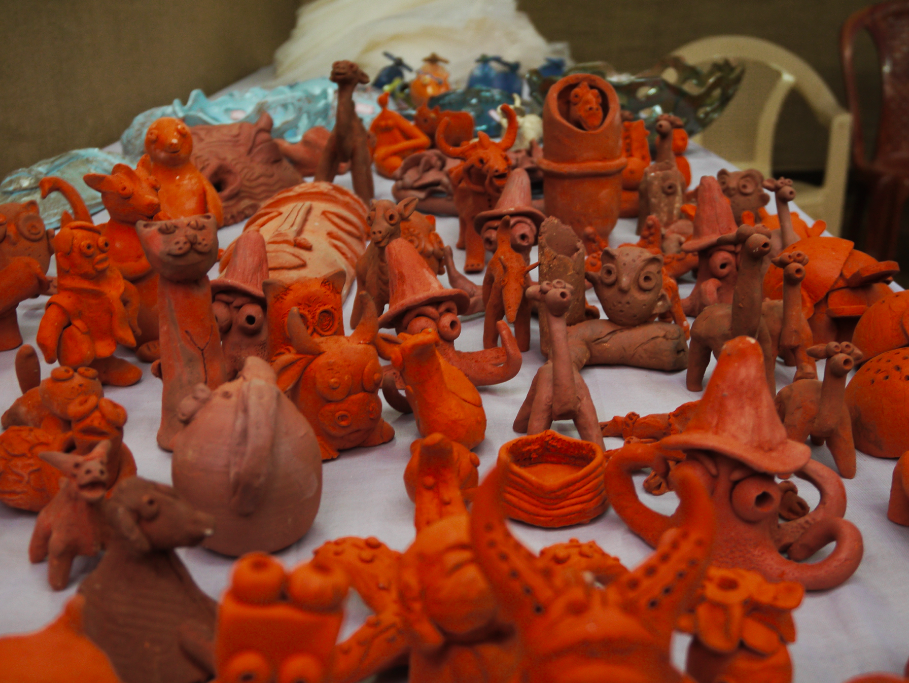
This year, the Art School will be completing hundred years, and the celebrations began in December 2018. Nandan Mela showcases the students` work at modest prices when not showcasing the latest arty trends, not just in oils and canvases, but in beautifully designed ceramic, wood, metal, leather and textiles as well. Some members of the faculty who have been well-known artists of their times, sometimes donate their works for students as a ,fund raiser. No wonder gallery owners from other cities descend on it to pick up works of art, be they in calendars or posters or prints. Every year, prints, water colours, lino, litho, pen sketch, and numerous mixed media in addition to samples of textiles, home linen and tableware designs are on display.
The handicrafts by the students created with the help of their professors are unique. They are inspired by the surroundings, but are not typical mass produced local souvenirs. The range of products on offer for the special fair has always been mind-boggling. Every year, the trends vary, but various elements define their benchmark and of the special care and attention paid to these. The students, after all, plan to pursue a career in arts and design.
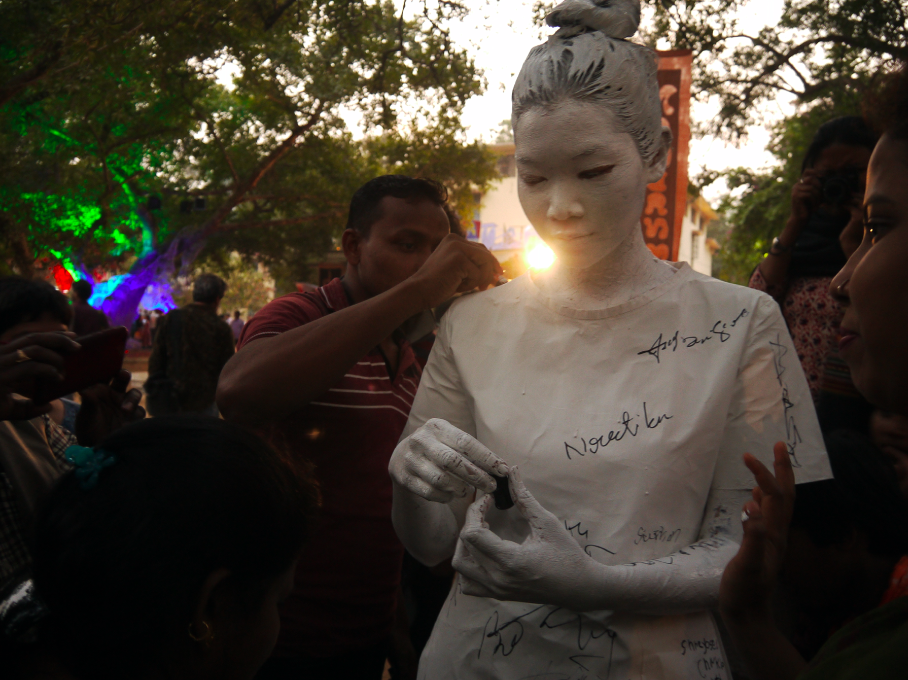
Carnival time
The two-day mela turns into a carnival with food and music because it is also a time for students, past and present, to let their hair down.
A carnival type of ambience grips you the moment you enter the Viswa Bharati grounds. This year it was a bit too noisy and crowded due to swelling crowds, but the students, with the help from the alumni, worked hard to put up interesting installations and exhibits. There was a cultural programme on the eve of the mela – a modern dance fusion – on the grounds of the University; various art symposiums and seminars ran parallel. Every year, the students put up beautiful installation type of decorations up in the trees along with fairy lights lending a magical effect to the whole atmosphere. This year it was no different; only extra special.
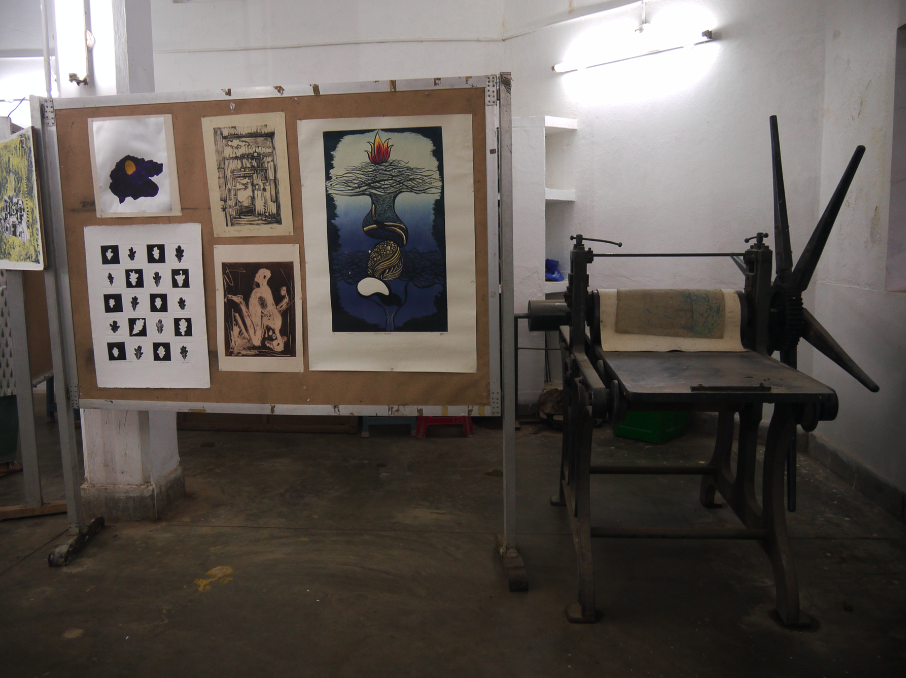
The centenary exhibition
Those were exciting times in art – a century back, and evolving. A new school of painting was emerging from the shadows of European art in India. The Bengal School married the two styles, and in the true spirit of things, to commemorate the centenary, a month-long exhibition of original works of well-known artists associated with Viswa Bharati, were displayed at the Nandan Gallery, adjacent to Kala Bhavan. Notable among these were works by Tagore and some of the best artists that emerged from Shantiniketan over the last hundred years or so. There was a portrait of Andrews by Tagore himself. Works of the blind artist Binod Behari Mukherjee, Nandalal Bose, sculptors Ram Kinkar Baij and K.G. Subramanyam, the virtual who’s who of Shantiniketan art was represented in this exhibition. So were works by Somnath Hore who trained at Calcutta’s Government College of Art, but joined Shantiniketan at the behest of another famous artist Dinkar Kaushik. The former set up the graphics and print making sections. Then there was Riten Mazumdar, an artist who was a student here and returned after his training in Scandinavia to design art on textiles.
Sadly, no photographs were allowed in here.
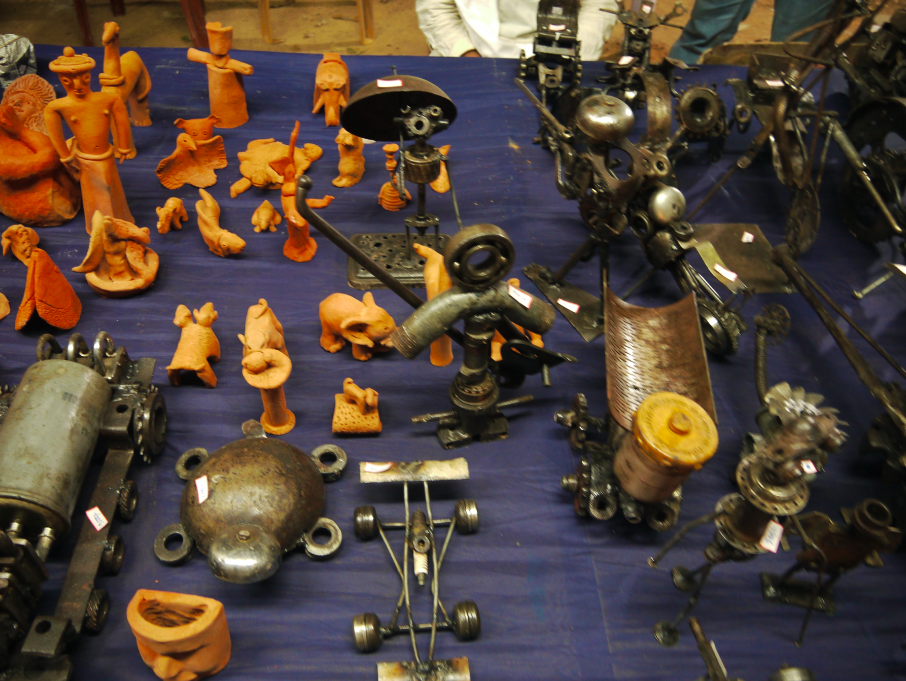
Art in life
For a long time it has been felt that artists need not only create paintings and sculptures to adorn walls, home and office spaces. A lot of art can be infused into everyday objects. Therefore a number of artistes have been lending their names to such utility objects. Same with studio pottery that can be used both as decorative and utility items. Toys, jewellery, batik and Shibori, the Japanese art of dyeing on cushion covers and recycled art were the highlights which made great souvenirs to carry back this year. There is usually a lot of colour, and though the exhibition starts from late afternoon, the lengthening rays of the winter sun often cast its shadows, and soon it was night.
Installations, interactive art whereby one could write on the dress of a model in a mask, graffiti and much more were amply featured. These were interspersed with sculptures of the great artistes already on campus grounds. Notable among these, is of course one of Ram Kinkar Baij’s sculpture of Gandhiji.
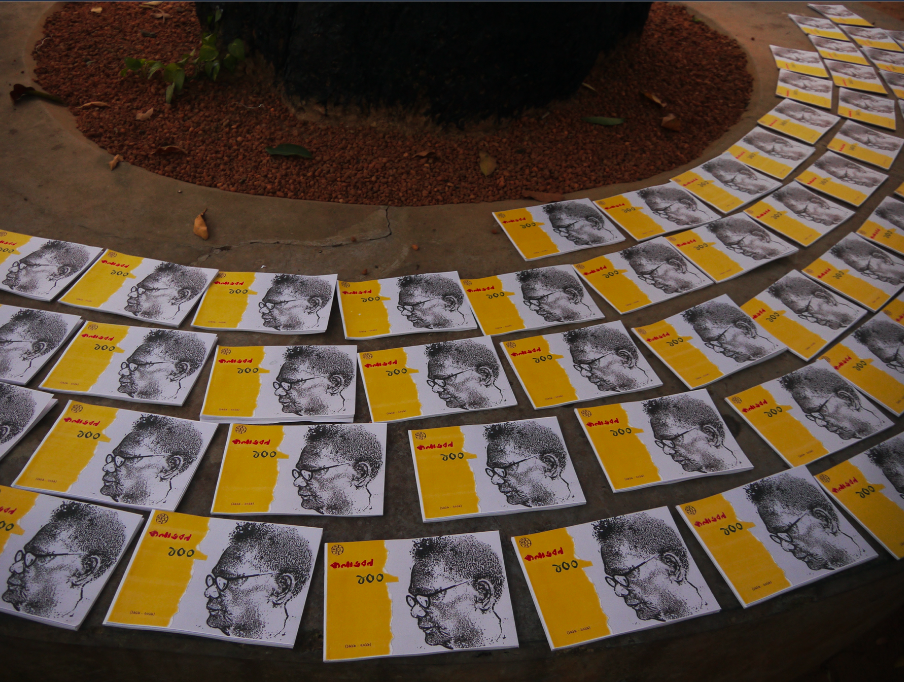
Food stalls in one corner sold a variety of snacks made and managed by students. Fritters, cup cakes and easily put together chaat disappeared fast, but what one missed were local delicacies prepared by Japanese and Koreans, such as crepes, gimbap, cinnamon tea, in some of the exhibitions visited by this writer previously.
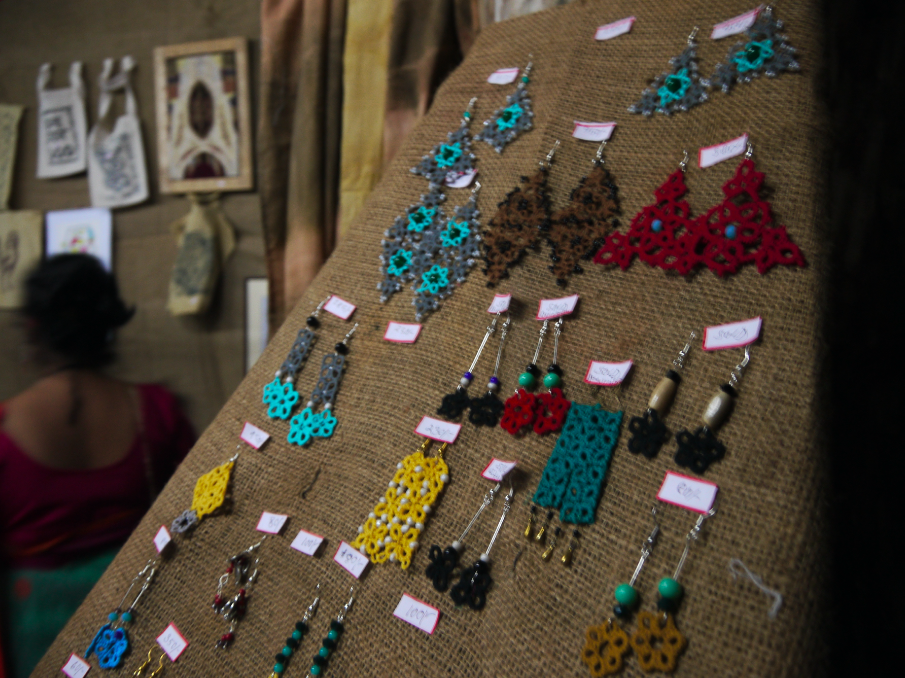
Once the crowds picked up it was difficult to see or experience everything. There is so much to record in such an art fair,, but suffice to add that all creations put up by students may not have been absolutely flawless. In fact, they are not meant to be as they are not machine manufactured but rather, made by hand. What makes this exposition truly interesting is that it is “preparatory art”, as commented by a visitor. Many from here would go on to become successful artists, some would teach and others would write. This is where it all begins, under the tutelage of masters, who were students once.

